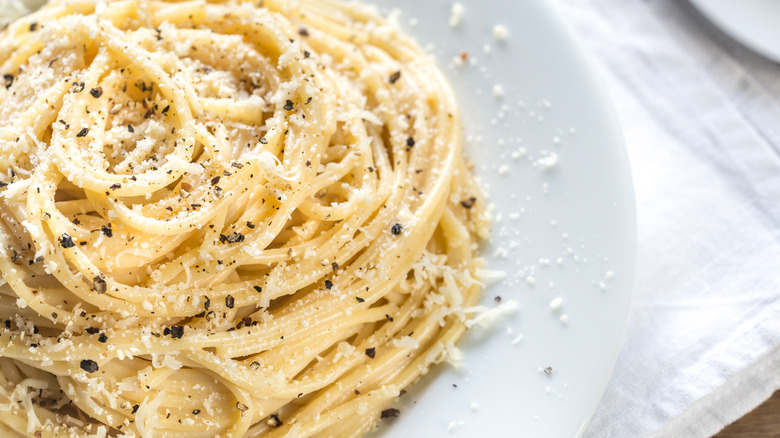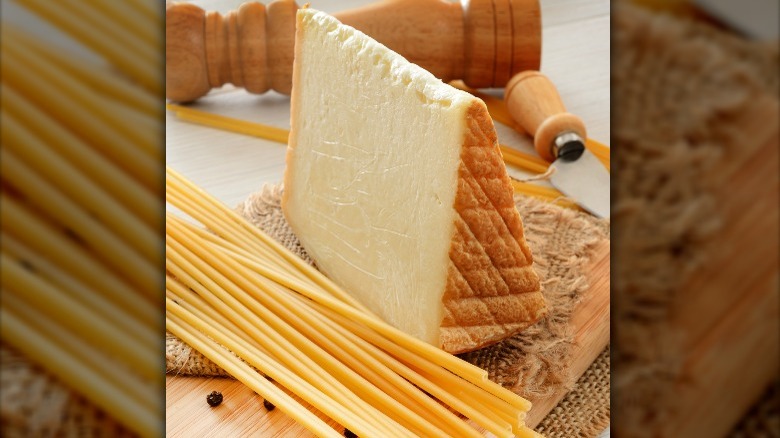The Type Of Cheese Cacio E Pepe Always Uses
The Roman equivalent of mac and cheese, cacio e pepe, is a luxuriously creamy pasta dish teeming with peppery and cheesy deliciousness. Speaking of the simplicity of Italian cuisine, the classic cacio e pepe recipe features three ingredients: pasta, pepper, and cheese. That said, it should come as no surprise that working with the right ingredients is essential in ensuring the outcome is what it should be. For the best (and most authentic) dish, only one type of cheese should ever be used.
Legend has it that the cheese and pepper dish was created by shepherds who would pack rations of nonperishable foods like pasta and pepper to supplement the cheese made from sheep's milk, notes The Pasta Project. Acting as a source of energy (pasta) and heat (black pepper), cacio e pepe kept the shepherds well-nourished and warm, all on a budget. But despite the romanticism of its origins, the BBC reports that the dish — much like amatriciana or carbonara — was more likely invented in poor Roman villages where local ingredients could be used to craft cheap, easy, and filling meals.
Despite its humility and seemingly uncomplicated approach, cooking all Italiana can be tricky when it comes to cacio e pepe. Blame the dairy. Since the dry, aged cheese has a tighter protein structure, Serious Eats explains that it's more susceptible to clumping when heat is applied, so cheese should be finely grated. The only other question is which formaggio reigns supreme?
Always use good quality pecorino romano
Don't bother looking for substitution; cacio e pepe purists will all confirm that only one cheese can be used, and that's pecorino romano. Also known in the Roman dialect as cacio, La Cucina Italiana explains that pecorino romano has been an integral part of the Roman diet for centuries because it's "rich in energy and easy to digest" with a "sharp flavor that embraces others." Adding a bit of salt and a bit of umami to the dish, pecorino romano, has made cacio e pepe an instant and eternal classic.
While you might be tempted to swap pecorino romano for the similar-looking parmesan, the two can't be used interchangeably in a traditional cacio e pepe recipe. Pecorino romano is a hard sheep's milk cheese with grassier and earthier flavors that contribute to its iconically sharp and slightly tangy profile. Aged for a minimum of five months, Cheese.com explains that as pecorino romano matures, it becomes smokier and more pungent, in addition to crumblier, which can also affect the flavors in your dish.
Beyond using a good pecorino romano, many Roman chefs confirm that it should be aged at least eight months. Gambero Rosso explains that toasting high-quality pepper is a must to amp up complexity, in addition to choosing the right kind of pasta, like thicker spaghettone (or the Roman equivalent, tonnarelli) for the creamy sauce to cling onto. Work quickly and wisely, and you can also master the art of the perfect cacio e pepe pasta.

